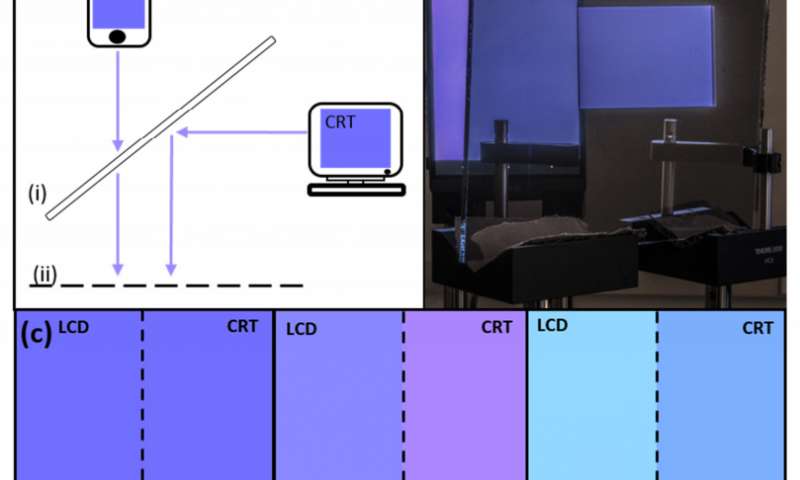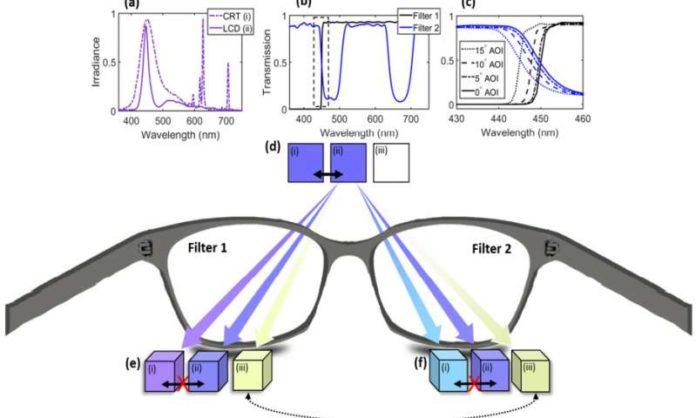Humans eyes have three types of cone cells behind them that differentiate color. The cones do their work by responding to the difference in wavelength of the incoming light. By doing this, some cells reacts to blue, some to green and some to red. This is a process that discards a significant amount of spectral information. And this vision is known as tetrachromatic vision. To enhance human color vision i.e. tetrachromatic vision, scientists have developed a new pair of glasses.
These new glasses allow a person (with color blindness) to have tetrachromatic vision. To develop this glasses, scientists developed two types of filters (One filter for a single eye). These filters remove some parts of the blue light spectrum. When the filters fitted into a frame and worn like regular glasses, the wearer is able sees the colors that are normally hidden—metamers.

With this new pair of glasses, scientists also found a way of fooling the brain into seeing. It is like there was a fourth type of cone, by wearing glasses with two types of filters. The result is the tetrachromatic vision.
Researchers said, “It is possible to extend the idea used to create their glasses to the other two colors that cone cells process, red and green, to create glasses that offer the ability to see six basic types of colors instead of the normal three. We are planning to start with green. Such glasses might be used to spot counterfeit money or to see a person in the jungle wearing camouflage.”
